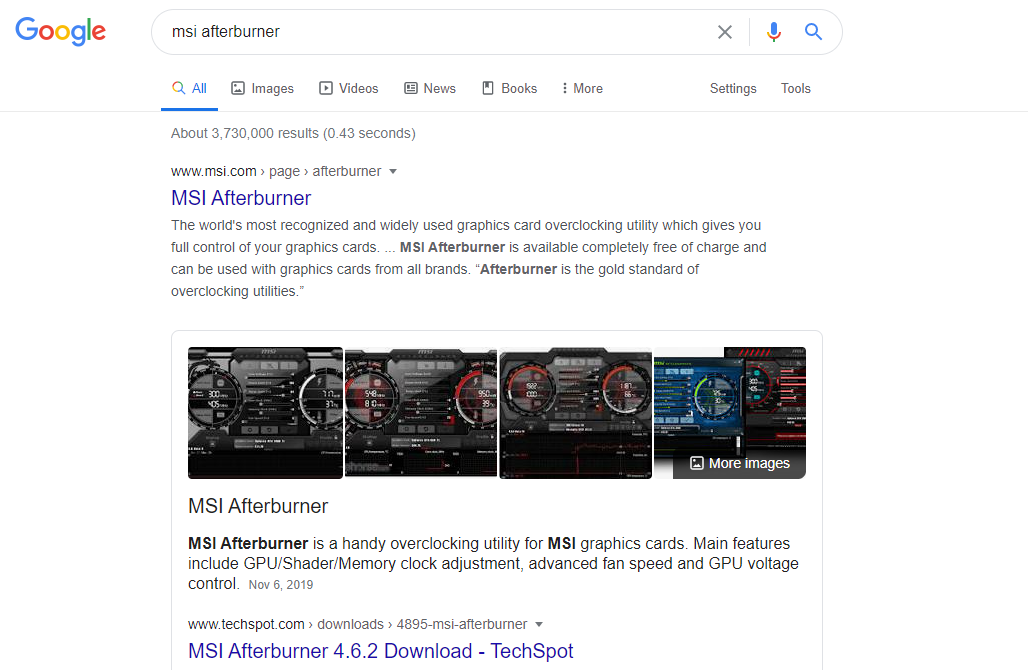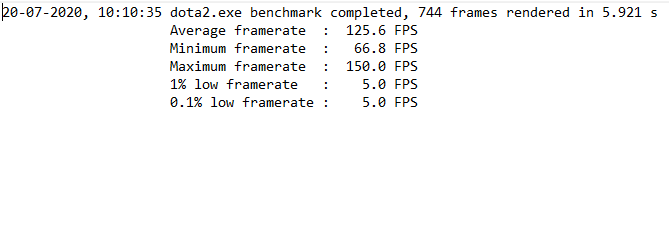This rising question is pretty commonly among gaming enthusiasts, and the answer is only two words – MSI Afterburner.
What is MSI Afterburner?
At first glance, MSI Afterburner can be considered as a powerful graphics utility that is developed by famous GPU manufacturers – MSI. It helps users with video capture, monitoring of graphics performance, overclocking, and of course, benchmarking. This utility is packed with a whole set of amazing benefits and features that we will be taking a look at as the article goes on.
What Makes MSI Afterburner an Amazing Graphics Utility?
Before we jump into how you can benchmark games using MSI Afterburner, we must take a look at what is under the hood.
• Overclocking Capabilities
For a lot of gaming enthusiasts, overclocking can seem like an alien and impossible task. However, with MSI Afterburner, even a novice can push his/her GPU to its maximum potential. The utility provides endless GPU settings starting from fan speed, memory clock speed, and core clock speed to temperature limit, power limit, and core voltage limit. With such a wide range of options, users can discover the harmony between capability and performance.
• Monitoring Capabilities
Albeit users can actively modify their GPU and CPU parameters to ensure maximum performance, MSI Afterburner is a powerful tool that also lists details of hardware performance in real-time. You can monitor not only your CPU and GPU core clock speeds, memory clock speeds, RAM and VRAM usage, but also analyze voltage, in-game CPU and GPU temperatures, and FPS.
• Video Capture
What makes MSI Afterburner an amazing graphics utility is its ability to capture in-game video in diverse formats. Additionally, you can change various parameters like resolution, framerate limit, and compression types to suit your needs.
• Benchmarking
MSI Afterburner has a built-in benchmarking utility called MSI Kombustor that is highly useful in GPU stress test. Moreover, it has support for both DirectX and OpenGL frameworks.
How to Benchmark Games?
Now that we have covered our bases, it is time to jump into how you can benchmark your games.
• Step 1: Download and Install MSI Afterburner
First and foremost, go to goolgle.com and search for “MSI Afterburner”. Once you have done that, the very first result is where you need to go to. Scroll down to the very bottom of the page, and you will see the download option. Here, simply click on the “MSI Afterburner”. After that, follow the simple installation procedure, and then we are good to go.
• Step 2: MSI Afterburner Configuration
The second step is crucial as this step will allow you to benchmark your games. The procedure is pretty straightforward, open MSI Afterburner, and click on “Settings”. A small window will pop-up with various tabs and configurations. Select the “Monitoring Tab” and under “Active hardware monitoring graph” select the parameters that you wish to use as your benchmark. Once you have done that, enable the “Show in On-Screen Display” option under “GPU temperature graph properties.”
Step 3: Benchmark Settings.
Once you are done with the GPU and CPU settings, go the “Benchmark” tab and select the keys for “Begin recording”, and “End recording”. Notice that I have selected num 4 and num 5 for these tasks. After that, all you have to do is just hit the begin recording button and play any game for 10 to 15 min. When you’ve played enough, stop the recording and go to the specific folder where you have saved the recording file. You can change the location of the file in the “Benchmark results file properties” setting. When you open the file, it will show you average FPS, minimum FPS, maximum FPS, and more details of your GPU.
• Step 4: That’s it!
If you have followed the steps correctly, all you have to do now is to open your game and check all the parameters in real-time. The results will be displayed on the top left corner of the screen. The more game you play, the more parameters will change that will allow you to benchmark your system’s performance. In the above example, I am playing Dota 2. The benchmark parameters shown include: • 53-degree GPU Temperature• 1278 MHz of GPU memory Usage• 150 FPS Note, that this step shows you parameter values. We highly recommend monitoring in-game parameters to get the best out of your benchmark results or if you are not satisfied with the FPS you’re getting consider checking out these GPUs.
[Optional] How to Run Benchmark Using MSI Kombustor
You can also run the MSI Kombustor benchmark to determine the upper limits of your computer system. The steps for this include:
- Open MSI Afterburner and click on the capital “K” symbol on the top left corner of the MSI Afterburner window. Remember, depending on which type of Afterburner skin you’re using, the placement of K can vary. Like in my case, the K is right below the MSI Afterburner text
- As soon as you click on the K button, the Kombustor will instantly start the stress test.
- You can examine and analyze your GPU load, FPS, and GPU temperature to develop an idea of how to power your graphics card is at default settings.
- Using the benchmark scores, you can tune your GPU and CPU to meet high-performance standards.
Final Verdict
There you have it! You now know how to benchmark your games using MSI Afterburner. What makes this utility unique is that it is compatible with almost every graphics card out there. So, what are you waiting for? Head straight to the MSI website and take advantage of the features they have to offer. Remember, gaming benchmarks allow you to fully customize your graphics settings so you can get maximum FPS without sacrificing visuals. Happy gaming!
How to Fix MSI Afterburner not Working?FIX: MSI Afterburner Not Detecting GPU On Windows 11/10EVGA Precision vs MSI AfterburnerAMD Ryzen 7 5800X3D Beats Intel’s Best Alder Lake CPU in Shadow of the Tomb…







